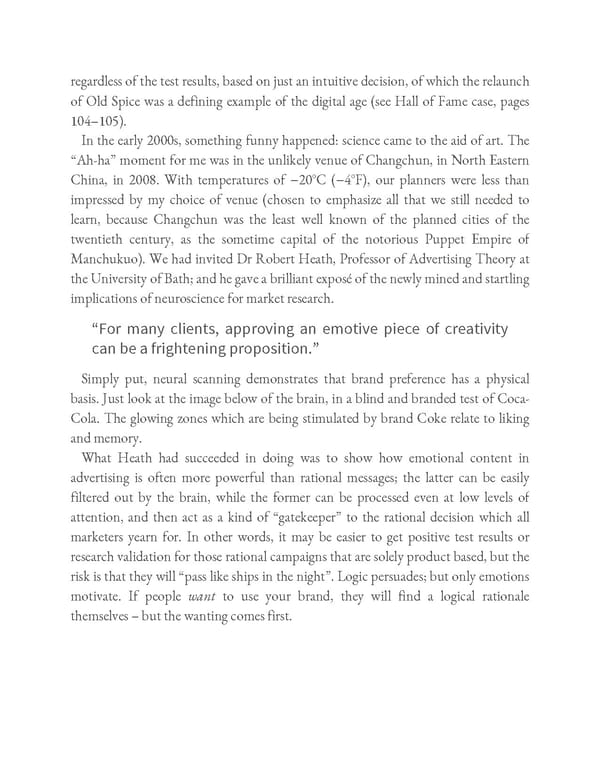regardless of the test results, based on just an intuitive decision, of which the relaunch of Old Spice was a defining example of the digital age (see Hall of Fame case, pages 104–105). In the early 2000s, something funny happened: science came to the aid of art. The “Ah-ha” moment for me was in the unlikely venue of Changchun, in North Eastern China, in 2008. With temperatures of −20°C (−4°F), our planners were less than impressed by my choice of venue (chosen to emphasize all that we still needed to learn, because Changchun was the least well known of the planned cities of the twentieth century, as the sometime capital of the notorious Puppet Empire of Manchukuo). We had invited Dr Robert Heath, Professor of Advertising Theory at the University of Bath; and he gave a brilliant exposé of the newly mined and startling implications of neuroscience for market research. “For many clients, approving an emotive piece of creativity can be a frightening proposition.” Simply put, neural scanning demonstrates that brand preference has a physical basis. Just look at the image below of the brain, in a blind and branded test of Coca- Cola. The glowing zones which are being stimulated by brand Coke relate to liking and memory. What Heath had succeeded in doing was to show how emotional content in advertising is often more powerful than rational messages; the latter can be easily filtered out by the brain, while the former can be processed even at low levels of attention, and then act as a kind of “gatekeeper” to the rational decision which all marketers yearn for. In other words, it may be easier to get positive test results or research validation for those rational campaigns that are solely product based, but the risk is that they will “pass like ships in the night”. Logic persuades; but only emotions motivate. If people want to use your brand, they will find a logical rationale themselves – but the wanting comes first.
 Ogilvy on Advertising in the Digital Age Page 181 Page 183
Ogilvy on Advertising in the Digital Age Page 181 Page 183